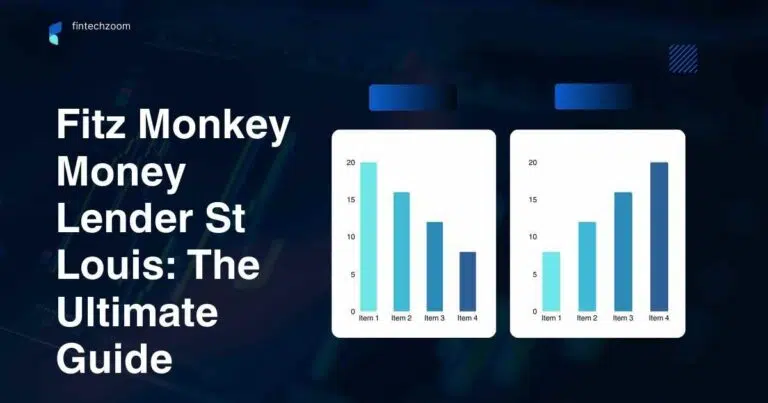NAB Announces Executive Changes for Transformation
Introduction: A New Chapter in NAB’s Leadership Evolution
In a decisive leadership move that has drawn attention across the financial sector, NAB announces executive changes designed to strengthen its transformation agenda and governance structure. The National Australia Bank (NAB), one of Australia’s “Big Four” financial institutions, has realigned its executive team to drive innovation, efficiency, and accountability at every level of its operations.
This strategic restructuring marks more than a simple personnel shift — it represents a fundamental change in how NAB positions itself for the future: digitally empowered, customer-focused, and governance-driven.
About NAB: The Banking Powerhouse Behind Australia’s Growth
Founded in 1858, National Australia Bank (NAB) stands as one of the largest financial institutions in the southern hemisphere, serving over 9 million customers globally. With total assets exceeding A$900 billion and a workforce of more than 35,000 professionals, NAB has long been synonymous with trust, scale, and leadership.
In recent years, however, NAB has faced the dual challenge of digital disruption and increasing regulatory complexity. Its response — continuous transformation and leadership modernization — has positioned it as a trailblazer among global banking peers.
🟦 NAB Corporate Snapshot
| Category | Details |
|---|---|
| Founded | 1858 |
| Headquarters | Melbourne, Australia |
| CEO | Andrew Irvine |
| Employees | ~35,000 |
| Total Assets (2025) | Over A$900 billion |
| Strategic Focus | Digital innovation, Governance, Sustainability, Customer experience |
Thus, when NAB announces executive changes, it’s not just a reshuffle — it’s a strategic signal to markets that the bank is evolving to stay ahead of global financial and technological trends.
Inside the Announcement: The Key Leadership Movements
On 21 October 2025, NAB announces executive changes affecting several high-ranking leadership roles, reflecting a broader focus on digital transformation and operational excellence.
🟩 Executive Leadership Restructure Summary
| Position | Outgoing Executive | Incoming Executive | Effective Date | Purpose / Comment |
|---|---|---|---|---|
| Group Executive – Transformation | — | Shane Conway | 1 Dec 2025 | Newly created role to lead technology modernization and efficiency initiatives |
| Customer & Corporate Services (CCS) | Sharon Cook | Les Matheson | 1 Dec 2025 | Aligns customer operations, corporate affairs, and sustainability functions |
| Group General Counsel | — | Jon Benson | 1 Dec 2025 | Focused oversight of legal, compliance, and regulatory risk |
| Group Executive CCS & General Counsel (Retirement) | Sharon Cook | — | 31 Dec 2025 | Retiring after years of executive leadership and governance service |
Each appointment reflects NAB’s intention to modernize its executive hierarchy and enhance strategic clarity in leadership responsibilities.
Why NAB Announces Executive Changes: The Strategic Drivers
When NAB announces executive changes, it signals a realignment of its operational priorities to match a rapidly shifting financial landscape. The main objectives behind this leadership renewal include:
1. Embedding Transformation as a Core Business Function
By elevating Shane Conway to Group Executive – Transformation, NAB has institutionalized transformation as a leadership mandate — not just a project.
His focus will be on integrating technology, simplifying processes, and accelerating digital innovation across all banking divisions.
“Our goal is to make banking simpler, faster, and safer for customers and colleagues,” stated CEO Andrew Irvine during the announcement.
This move ensures that transformation remains at the heart of NAB’s decision-making and growth strategy.
2. Strengthening Governance and Compliance Integrity
With the appointment of Jon Benson as Group General Counsel, NAB is fortifying its governance framework. Separating legal and compliance functions from customer services ensures sharper regulatory alignment and ethical transparency — a timely move amid rising global compliance expectations.
3. Streamlining Customer and Corporate Services
Les Matheson’s expanded role now brings together Customer Experience, Corporate Affairs, Climate Strategy, and Group Governance. This consolidation supports a “one-team” approach, enabling faster decision-making and enhanced service delivery for both retail and business customers.
Internal Impact: A Culture of Accountability and Innovation
Whenever NAB announces executive changes, it also initiates a ripple effect across its corporate culture. Internally, this restructuring aims to foster agility, ownership, and forward-thinking collaboration.
Key Internal Outcomes
- Simplified Hierarchies: Clearer reporting structures reduce bureaucracy and increase responsiveness.
- Employee Empowerment: Promoting internal talent (Conway and Benson) reflects NAB’s commitment to growth pathways.
- Innovation Mindset: A stronger emphasis on continuous improvement and data-driven transformation.
- Cultural Renewal: The new leadership model prioritizes inclusivity, transparency, and accountability.
These cultural shifts are vital as NAB competes in an environment where agility is as important as financial performance.
External Impact: Market, Investor, and Customer Confidence
The announcement that NAB announces executive changes has been received positively by analysts and market observers, who see it as a proactive measure to ensure long-term stability and competitiveness.
🟧 Stakeholder Impact Table
| Stakeholder | Expected Benefit | Measured Outcome |
|---|---|---|
| Investors | Greater operational stability and governance confidence | Stronger shareholder trust and valuation confidence |
| Customers | Faster digital services and simplified product offerings | Improved customer satisfaction and retention |
| Regulators | Clearer accountability and compliance leadership | Enhanced reputation for transparency |
| Employees | Leadership renewal and cultural engagement | Higher motivation and team productivity |
The restructuring also reinforces NAB’s commitment to sustainability, innovation, and ethical leadership — all of which resonate strongly with modern investors.
Global Context: A Trend of Leadership Reinvention
NAB’s announcement is part of a broader global banking trend toward leadership agility. International players such as Barclays, Citigroup, and HSBC have made similar moves, creating specialized transformation and governance roles to future-proof their business models.
By following this trajectory, NAB announces executive changes that align it with global best practices — blending traditional banking strength with new-age adaptability.
Future Outlook: What NAB’s New Leadership Means for the Next Decade
The months following this announcement will be critical in determining how effectively NAB implements its transformation roadmap.
Key areas of focus will include:
- Accelerating Digital Transformation: Delivering faster, AI-powered services across retail and business channels.
- Operational Efficiency: Reducing duplication, automating core processes, and optimizing resources.
- Governance Excellence: Enhancing audit quality, risk control, and transparency under Jon Benson’s legal leadership.
- Sustainability Leadership: Expanding NAB’s commitment to climate finance and ESG reporting.
- Talent Retention: Sustaining leadership continuity amid structural changes.
If these goals are met, NAB could strengthen its reputation as a future-ready financial institution leading Australia’s transition into next-generation banking.
Conclusion: The Strategic Meaning Behind NAB’s Leadership Realignment
Ultimately, NAB announces executive changes not as a reaction to pressure — but as a proactive measure to anticipate future challenges.
This leadership overhaul signifies an era of clarity, accountability, and innovation, anchored by strong governance and a people-centric transformation vision.
By redefining its executive framework and empowering its internal talent, NAB demonstrates that sustainable success lies not in maintaining tradition but in modernizing it intelligently.
This move places the bank in a strong position to navigate economic shifts, regulatory demands, and digital disruption with confidence.
FAQs: Understanding NAB’s Executive Changes
| Question | Answer |
|---|---|
| 1. Why did NAB announce executive changes? | To strengthen digital transformation, governance, and leadership efficiency as part of its strategic realignment. |
| 2. Who are the main executives affected? | Shane Conway (Transformation), Les Matheson (Customer & Corporate Services), Jon Benson (General Counsel), and Sharon Cook (retiring). |
| 3. What benefits will customers see? | Simpler banking processes, faster service delivery, and more secure, technology-driven experiences. |
| 4. How will governance improve under the new structure? | A separate General Counsel role enhances compliance, oversight, and ethical decision-making. |
| 5. Does this signify a long-term strategy? | Yes — when NAB announces executive changes, it sets the foundation for sustained growth, digital innovation, and leadership continuity. |



